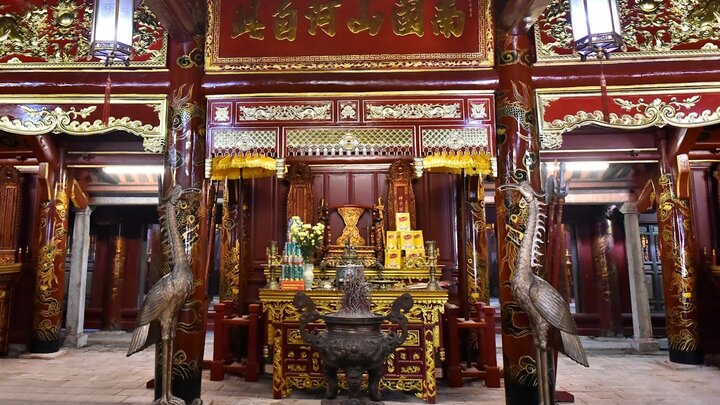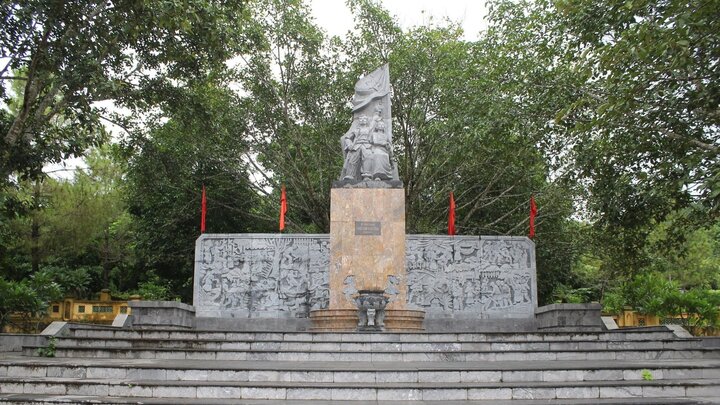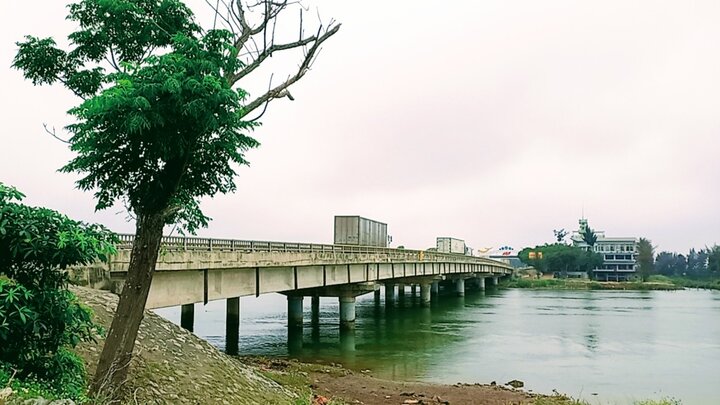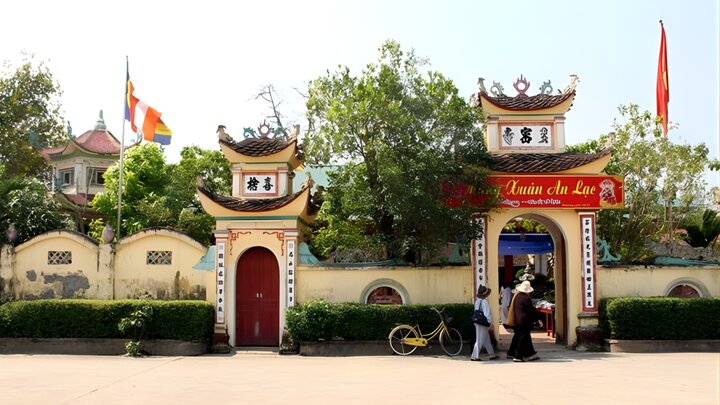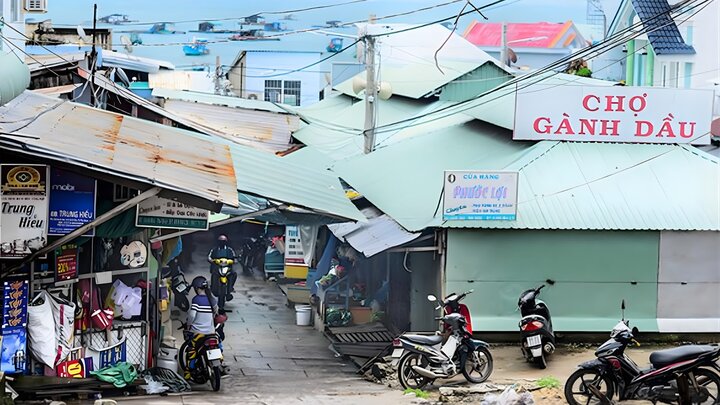1. General Introduction to the Thai Mieu of the Hau Le Dynasty
1.1 General Introduction to the Thai Mieu of the Hau Le Dynasty
Located peacefully on Kieu Dai street, Hac Thanh ward, Thanh Hoa province, Thai Mieu of the Hau Le Dynasty is a sacred and solemn ancestral worship structure, built to commemorate 27 emperors, empress dowagers, and founding officials of the Later Le Dynasty. The Later Le Dynasty is considered one of the most prosperous dynasties in Vietnam's feudal history.
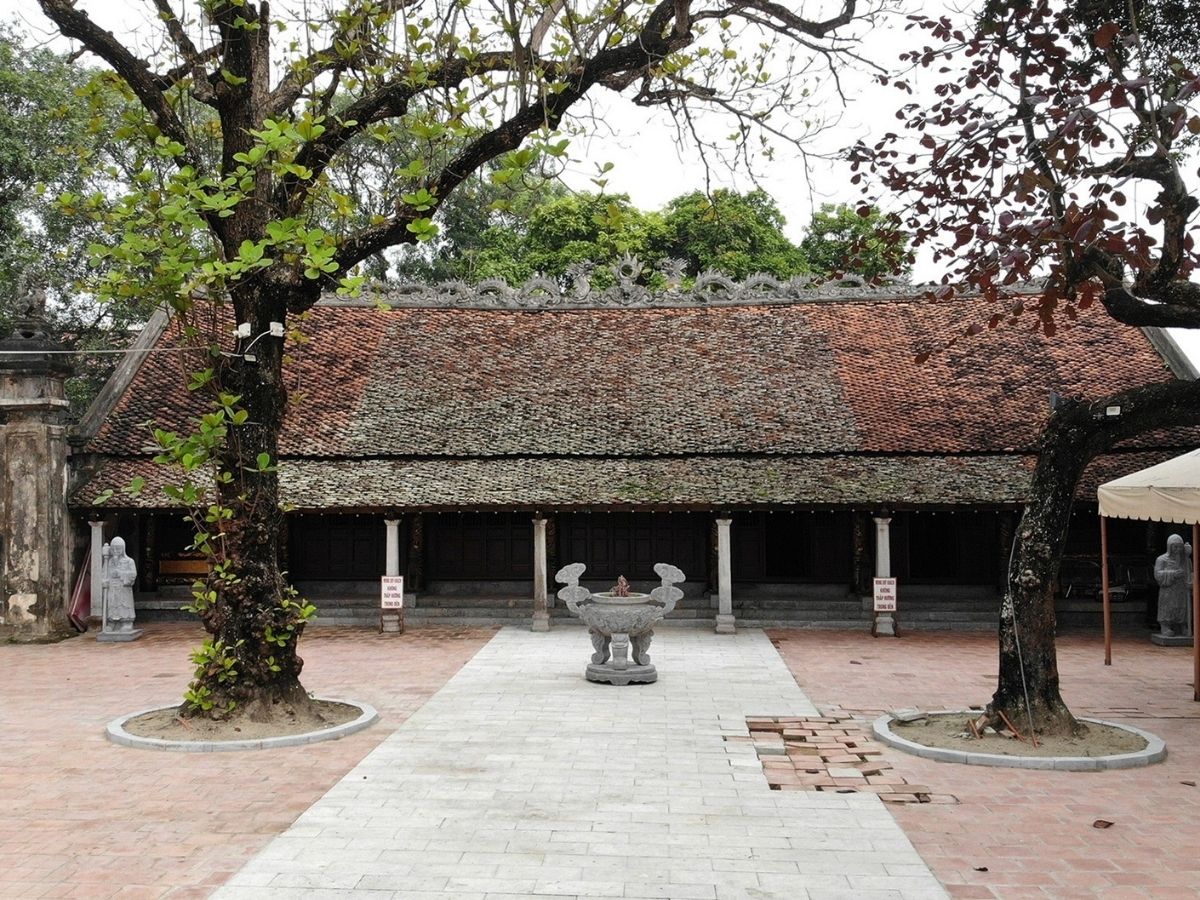
The space outside the Temple of the Later Lê Dynasty. (Source: Collected)
Not only holding deep spiritual significance, the Temple also preserves the imprints of many outstanding historical figures such as Nguyen Trai and Le Lai, loyal officials who, together with Le Thai To, built the Lê dynasty's foundation, ushering in a prosperous period lasting nearly four centuries. With its ancient, tranquil space imbued with traditional culture, the Temple of the Later Lê Dynasty today has become a cultural and spiritual landmark representative of Thanh Hoa land, attracting numerous visitors and locals to offer incense in remembrance.
1.2 History of the formation of the Temple of the Later Lê Dynasty
The formation process of the Temple of the Later Lê Dynasty is associated with many historical upheavals. Initially, the structure was built in Lam Kinh (old Tho Xuan district), the homeland of King Le Thai To and the origin of the Later Lê dynasty. After a major fire, the temple was moved to Thang Long for the convenience of ancestor worship by the court. In 1805, under the reign of King Gia Long (Nguyễn dynasty), the entire Temple was relocated to the Bo Ve area, now part of central Thanh Hoa. This location was originally the site of the former Chieu Hoa palace, which once housed Tuyen Tu Nhan Y Chieu Tuc Hoang Thai Hau, the consort of King Le Thai Tong.

Sacred tablet of Emperor Cao To and the tablet of Le Than Tong. (Source: Collection)
Having existed for over 220 years, the Mausoleum of the Later Le Dynasty still retains its majestic and ancient appearance, reflecting the architectural and artistic level characteristic of the early 19th-century Nguyen period. Not only a place preserving artistic value, the structure also carries profound meaning in the spiritual life of the people of Thanh Hoa province. This place is a symbol of the moral principle 'when drinking water, remember its source', of the spirit of gratitude towards ancestors and national pride.
2. How to get there and experience the journey
The journey to the Mausoleum of the Later Le Dynasty is very convenient, especially for tourists departing from Hanoi or the center of Thanh Hoa. From Hanoi, tourists can travel along the Hanoi – Ninh Binh – Thanh Hoa expressway (new National Highway 1A), a distance of about 150 km, with an average travel time of 2.5 to 3 hours by car or bus. Upon reaching the southern gateway of Thanh Hoa city center, continue for another 2 km to reach the relic site.
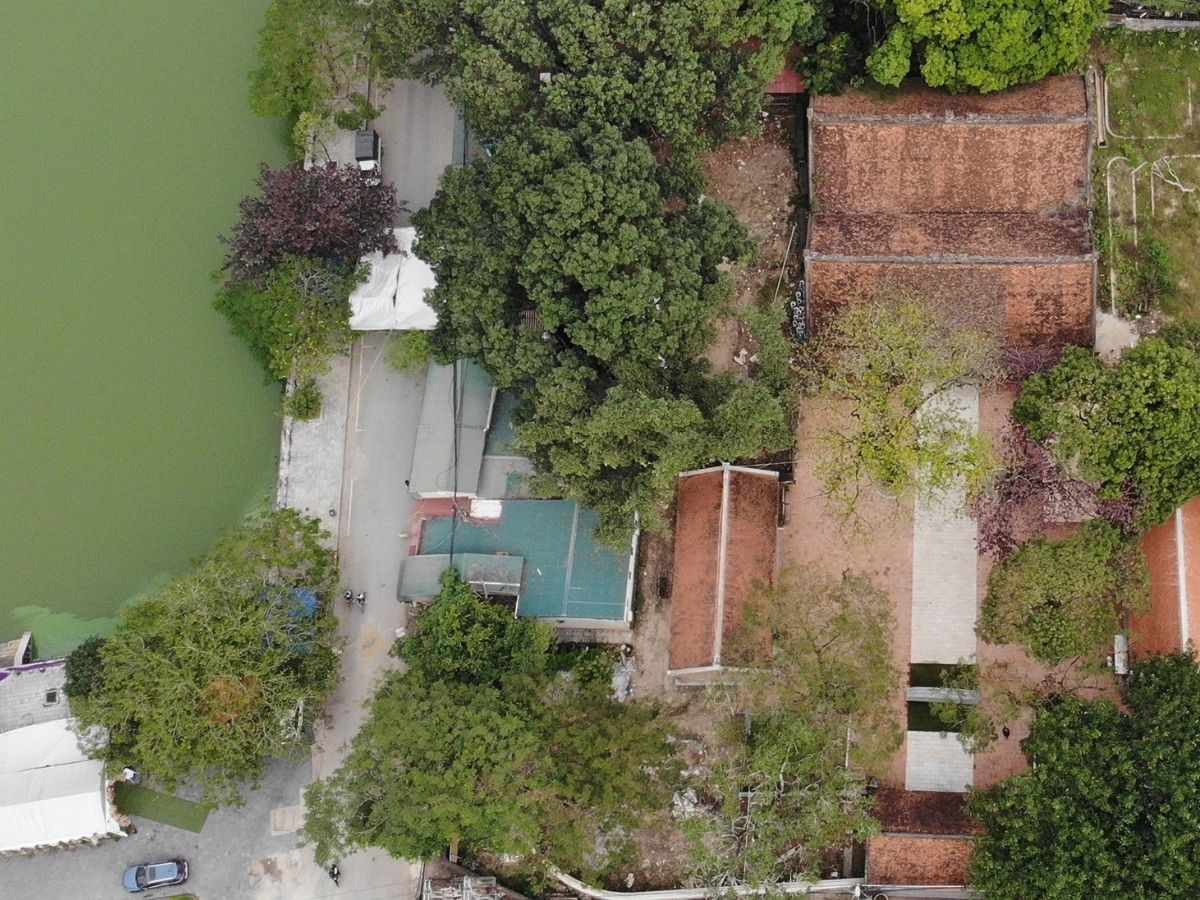
The space of the Royal Ancestral Temple viewed from above. (Source: Collected)
The Later Lê Dynasty Royal Ancestral Temple is located in Bo Ve village (now Kieu Dai hamlet), Dong Ve ward, its location is quite easy to find as it is situated right near the main road of the central area. The path has clear signs and the road is flat and spacious. Visitors can choose to travel by motorbike, private car, or taxi for convenient movement and sightseeing.
The space around the Royal Ancestral Temple is surrounded by ancient trees that provide shade year-round, creating a fresh and quiet atmosphere. This is an ideal place for those who wish to find a spiritual sanctuary in the heart of the city. The relic site also has parking, restrooms, and thoughtful services to support visitors, making it easier and more comfortable to visit, offer incense, and capture beautiful photos.
3. Ideal time to explore
The Later Lê Dynasty Royal Ancestral Temple is a suitable destination for visitors year-round, as the space here always carries a serene, ancient, and sacred aura. Each season, the relic site has its own unique charm.
Especially in spring, from the 9th to the 15th day of the first lunar month, the Royal Ancestral Temple often hosts the New Year's opening festival. This is an important spiritual event to pray for national peace, people's well-being, and abundant harvests. Within the festival atmosphere, visitors will immerse themselves in a solemn yet warm ambiance, clearly feeling the traditional cultural beliefs of the Vietnamese people.

Opening ceremony at the Temple of the Later Lê Dynasty. (Source: Collected)
Besides, the 8th lunar month annually (from the 20th to the 22nd) is when the largest festival takes place at Thai Mieu, commemorating Emperor Le Thai To, the founding king of the Later Le Dynasty. Rituals of incense offering, sacrifices, and unique folk cultural activities such as dragon dances, festival drums, palanquin processions... recreate the heroic atmosphere of the ancient dynasty. The festival offers visitors profound cultural and historical experiences.
4. Prominent Experiences at the Later Le Dynasty's Thai Mieu
4.1 Historical Structures and Relics
The Thai Mieu of the Later Le Dynasty is one of the typical structures representing the architectural art of the Later Le and Nguyen dynasties. Its architecture demonstrates a delicate harmony between ancient solemnity and the nation's artistic beauty. The entire complex is laid out in the traditional 'Nhi' (二) character shape, comprising Nghinh Mon, the courtyard, Tien Dien, and Hau Dien, forming a balanced and grand ensemble.
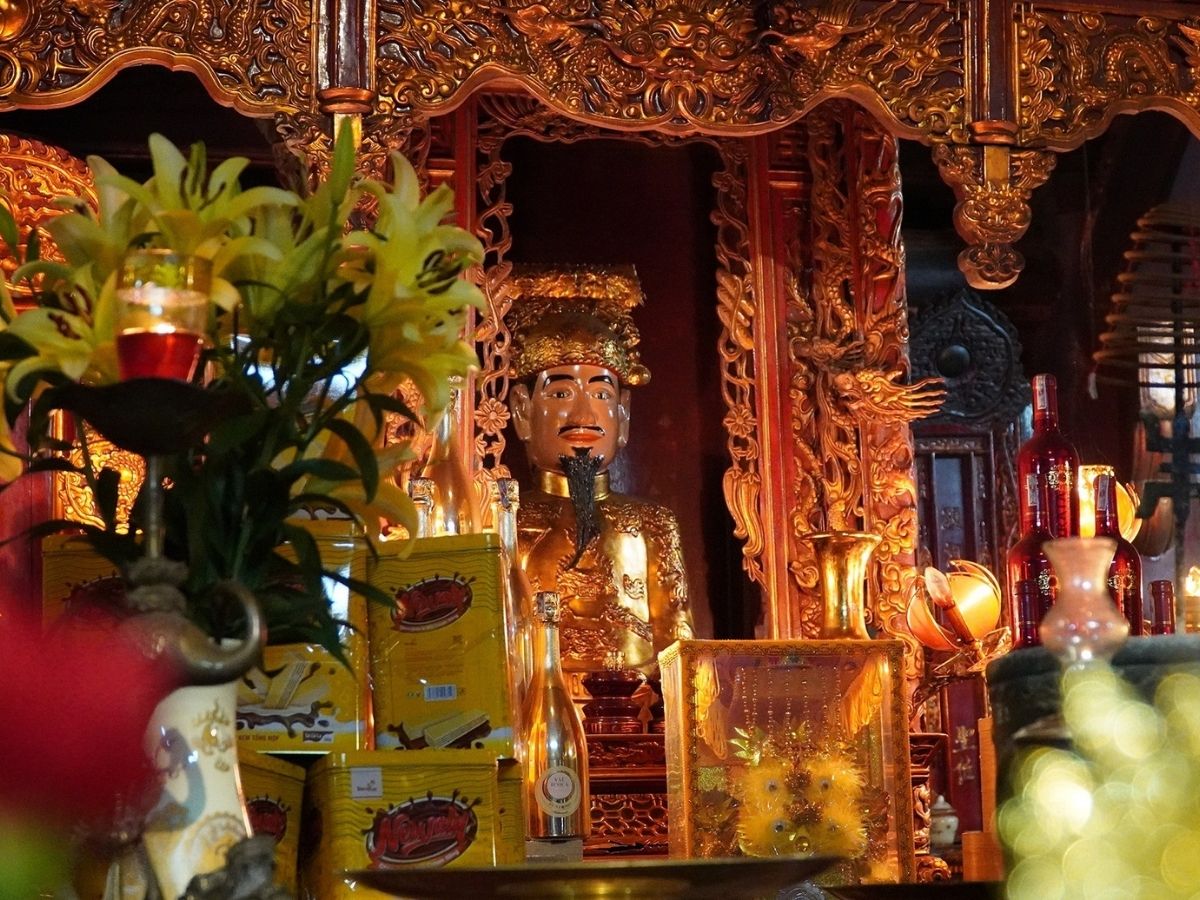
The sacred worship space inside the Thai Temple (Thai Mieu). (Source: Collected)
The Front Hall and Rear Hall are arranged adjacent to each other in a connected roof ridge style. Each hall has 7 bays, with roofs covered in traditional horseshoe tiles, intricately decorated above with the “two dragons worshipping the moon” motif, symbolizing the power and spiritual aura of the dynasty. In front of the Front Hall are two decorative pillars, 6 meters high, each topped with two Nghe standing guard. Below are six meticulously carved jackfruit wood Nghe. In feudal culture, the Nghe symbolizes strength, protection, and prosperity, and serves as a guardian spirit to ward off evil influences, keeping the worship space perpetually serene.
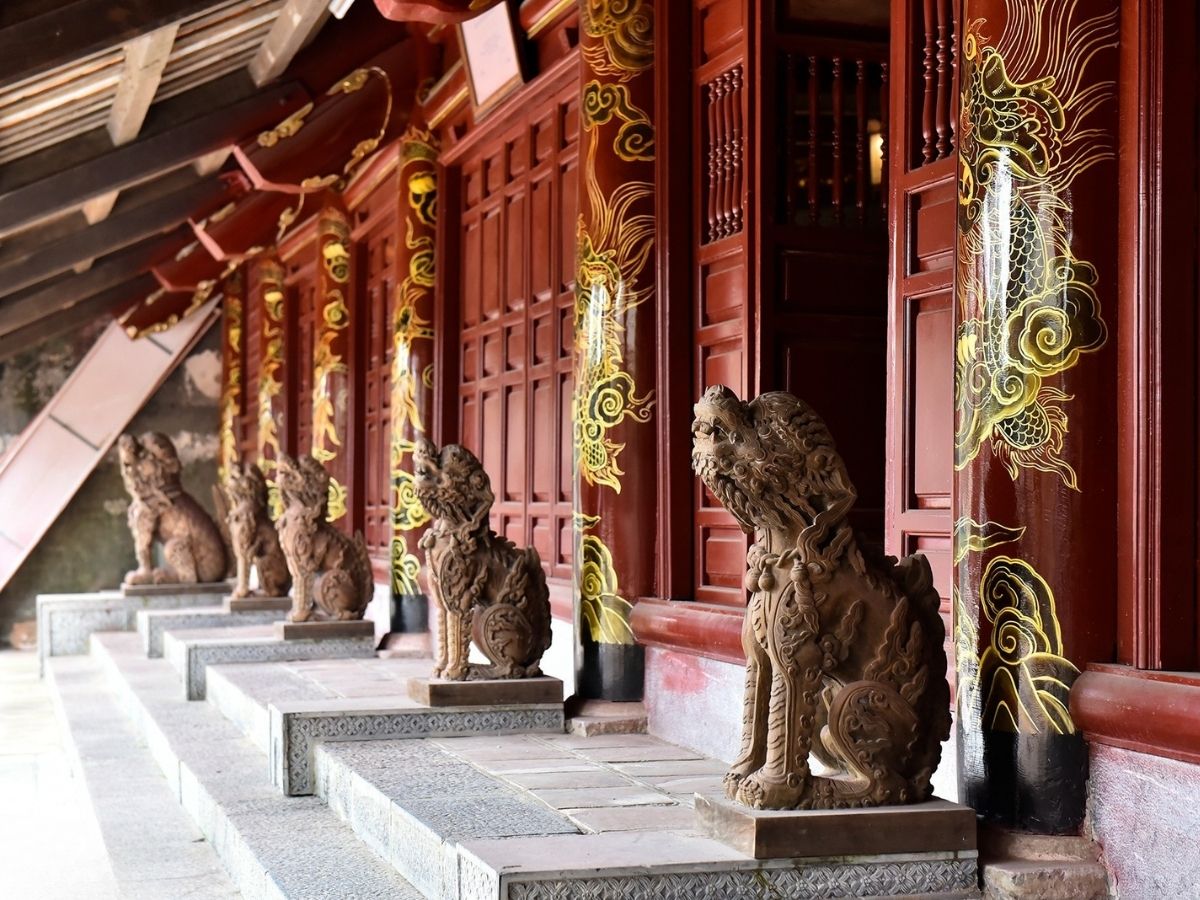
Wooden Nghe statues are made from jackfruit wood. (Source: Collection)
Inside the Front Hall, there are five altars, arranged according to traditional rituals: the center altar is dedicated to the Council of Officials, and the two sides are dedicated to the princes of the Later Lê dynasty. Additionally, the left side is dedicated to Nguyen Trai, and the right side to Le Lai. These are two founding heroes who made great contributions to the Lam Son Uprising, symbolizing the Vietnamese people's spirit of loyalty, righteousness, wisdom, and bravery.
Following the Front Hall is the Rear Hall, which houses the memorial tablets of 27 kings of the Later Lê dynasty (including 21 reigning kings and 6 posthumously honored kings), along with Empresses Dowager and four ancient sacred figures: Le Thai To, Le Than Tong, Le Huyen Tong, and Le Gia Tong. Furthermore, at the Royal Ancestral Temple, there is a statue of King Le Thai To (Le Loi) and six precious statues including King Le Than Tong and five consorts of different nationalities: Dutch, Muong, two Cham wives, and one woman from Kinh Bac.
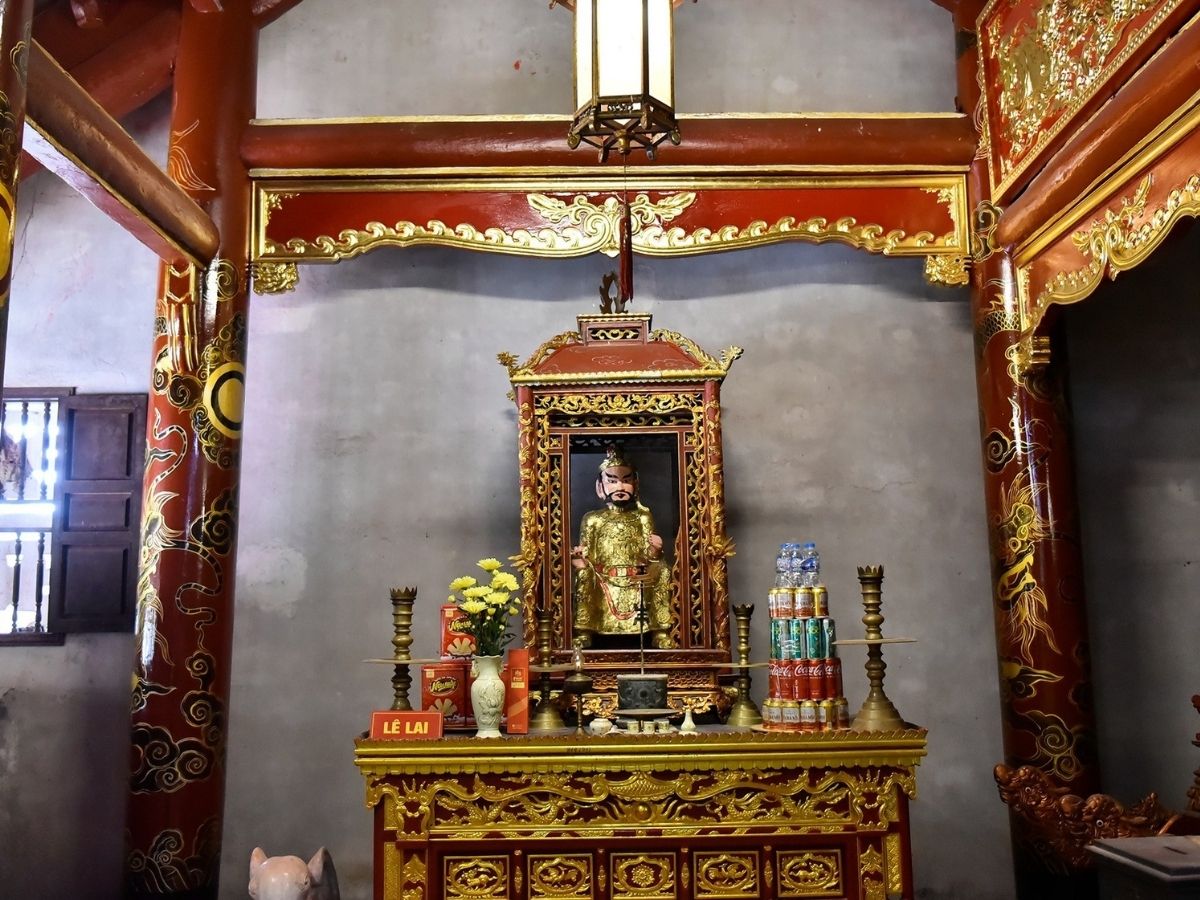
Altar of Le Lai at the Temple of the Later Le Dynasty. (Source: Collected)
Over 200 years of history, the Temple of the Later Le Dynasty still preserves many precious ancient artifacts, notably the jackfruit wood 'nghe' statues from the 17th century, intricately carved, showcasing the talent of ancient artisans and bearing the strong imprint of traditional art. All contribute to creating a sacred space, rich in Vietnamese cultural identity, where the spiritual energy of the golden era converges.
4.2 Historical and Cultural Value of the Temple
More than just a unique architectural work, the Temple of the Later Le Dynasty carries profound historical and spiritual value. The temple is a testament to our nation's tradition of "drinking water, remembering its source" (gratitude). During the Gia Long reign, the temple was conferred the title "National Temple," demonstrating the special reverence of the Nguyen Dynasty for the Le Dynasty.
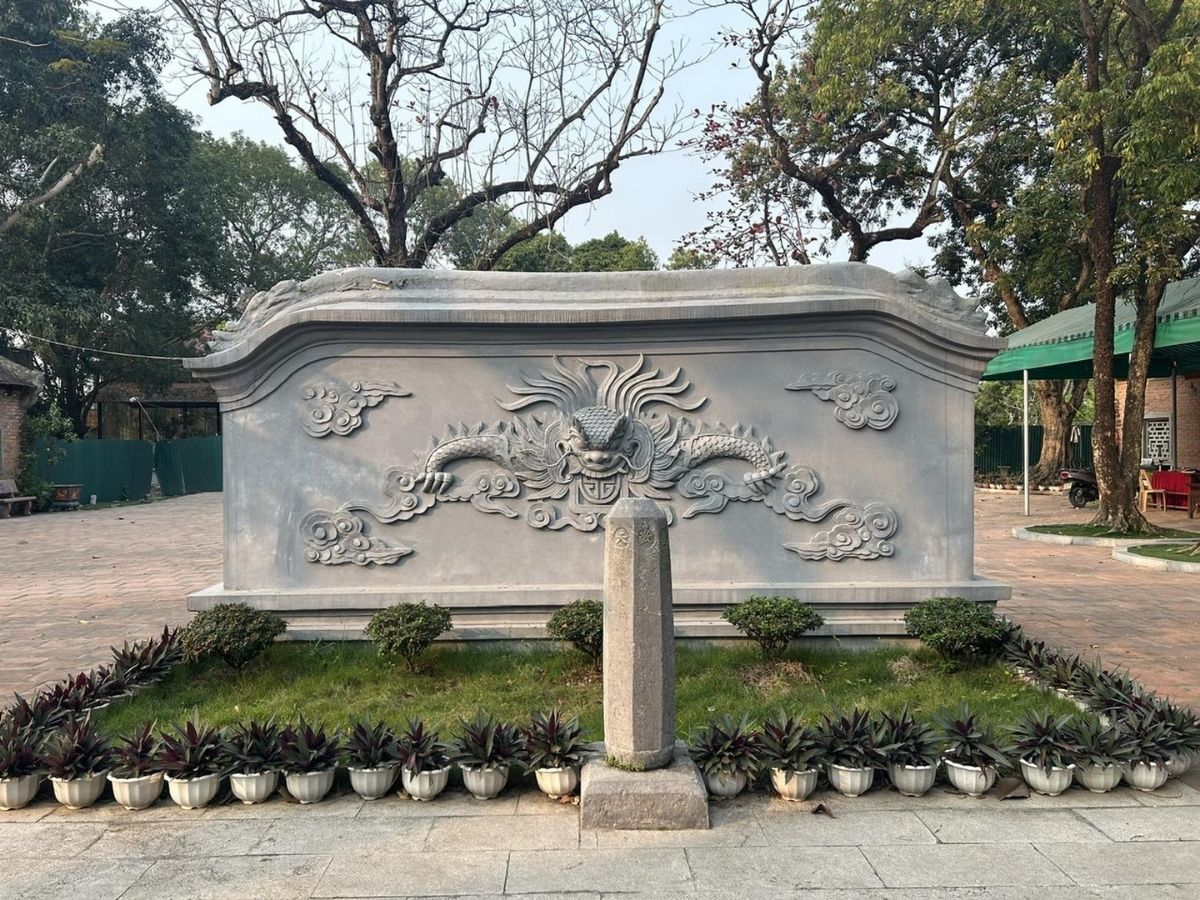
Stone stele inside the Thai Mieu courtyard. (Source: Collected)
King Gia Long also assigned Phan Phu Tien to oversee the temple and establish the position of "Dien tu cong" for the Le family to worship. Simultaneously, 100 people from the former Bo Ve village were appointed as temple caretakers, responsible for regular care and maintenance. This attention not only demonstrated gratitude towards the Le dynasty but also served as an act of succession, affirming the spirit of continuation and the preservation of national traditions.
Today, the Thai Mieu of the Later Le Dynasty is not only a place to commemorate the royal family of the Le dynasty but also a cultural symbol connecting the past and present. The structure contributes to deepening the historical value of the Thanh Hoa region. Visiting Thai Mieu, tourists can not only admire the ancient architectural heritage but also feel national pride, the virtue of gratitude, and the spirit of returning to one's roots.
5. Experiences and Notes
To make the visit to the Thai Mieu of the Later Le Dynasty complete and meaningful, visitors should note a few small points below to show reverence and immerse themselves in the sacred space of the relic:
Choose neat, modest, and polite attire, avoiding overly short or revealing clothing to maintain the solemnity of the place of worship.
Maintain a gentle demeanor, speak softly, and avoid laughing or making noise to help the worship space remain quiet and solemn.
Pay attention to general hygiene, do not litter, and do not touch worship items or ancient artifacts to preserve the value of the relic.
Bring fresh flowers, betel leaves and areca nuts, or simple offerings when offering incense to commemorate ancestors.
Spend time praying and calming your mind to feel purity, peace, and the sacred connection between people and the nation's cultural roots.
On major festival occasions, it is advisable to arrive early for easier visiting, participation in ceremonies, and paying homage to the worship areas.
6. Combining Tourist Destinations in Thanh Hoa
6.1 Lam Kinh Historical Site
The Lam Kinh Historical Site is an unmissable destination on the journey to explore the imprint of the Le dynasty. Located about 50 km west of the Thai Mieu of the Later Le Dynasty, Lam Kinh is considered the origin region of the Later Le Dynasty, associated with the Lam Son uprising and the life of King Le Thai To - Le Loi. It is also the resting place of the early kings of the Later Le Dynasty, along with many ancient relics such as the Lam Kinh main palace, Ngoc Well, Tien Loan Kieu Bridge…
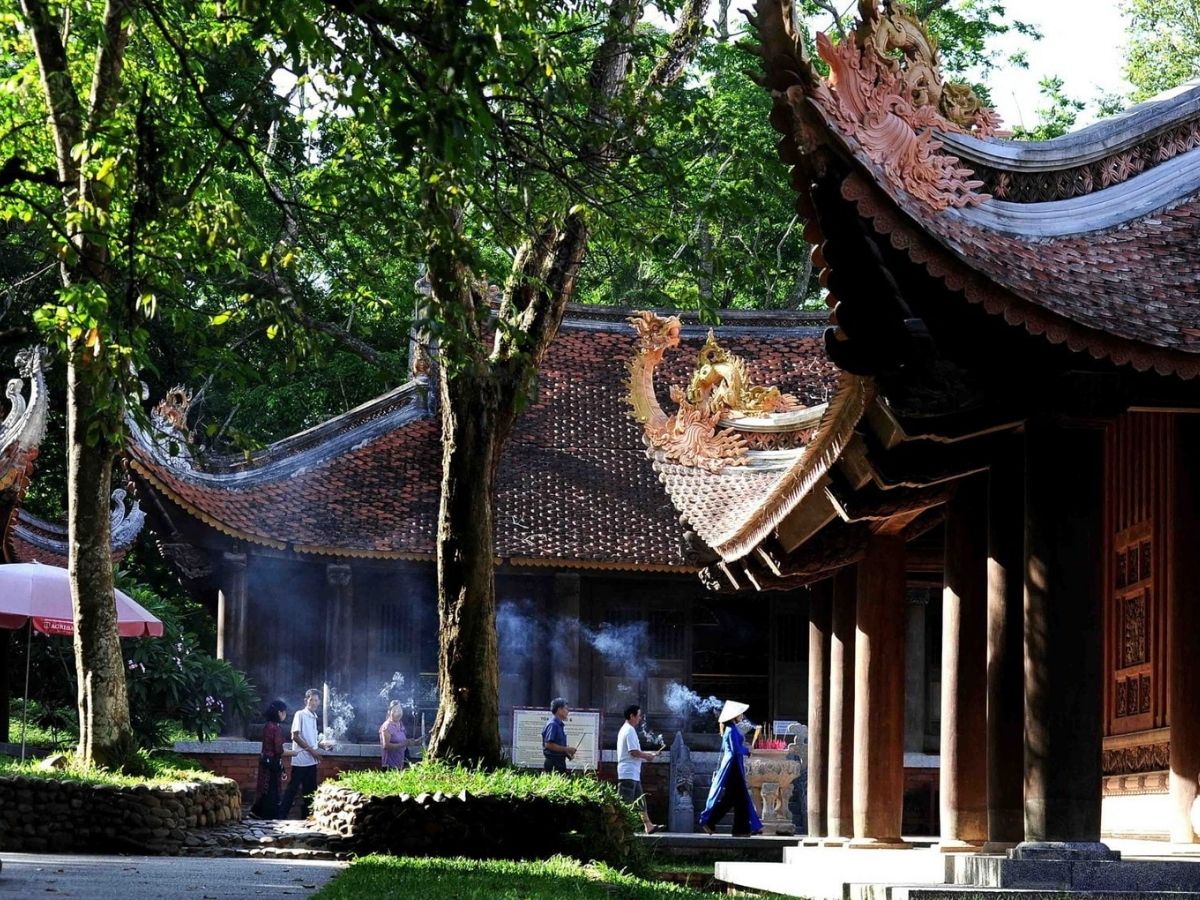
Lam Kinh Historical Site is associated with the Later Lê Dynasty. (Source: Collected)
Not only does it hold great historical value, Lam Kinh is also a sacred space, where the Lam Kinh Festival is held annually. On the 21st day of the 8th lunar month, the festival attracts tens of thousands of visitors from all directions. When combining a visit to Lam Kinh and Later Lê Dynasty Ancestral Temple, visitors' journey becomes more complete as they learn about the origin of the Later Lê Dynasty and pay homage to the solemn place of worship in the heart of Thanh Hoa.
6.2 Lê Lai Temple
Located in Kien Tho commune, about 55 km from Lam Kinh Historical Site, the Lê Lai Temple is a special stop on the journey to discover Thanh's heritage. The temple was built to commemorate the merits of Trung Tuc Vuong Le Lai, who sacrificed himself to save King Le Loi during the Lam Son uprising.
Lê Lai Temple is not only a special national historical relic, but also a symbol of loyalty and righteousness, the spirit of "sacrificing oneself for the country" honored by Vietnamese people through many generations. Here, visitors can admire the ancient architecture in the style of the Lê Dynasty, immerse themselves in the peaceful space amidst mountains and forests, and better feel the spiritual connection between the Later Lê Dynasty Ancestral Temple, Lam Kinh, and Lê Lai Temple.
6.3 Sam Son Beach
After visiting the Later Lê Dynasty Ancestral Temple, visitors can combine it with exploring Sam Son Beach. As one of the most famous beaches in the North and North Central region, Sam Son is about 16 km from Thanh Hoa city center. With its long coastline, clear blue water, fine sand, and gentle waves, Sam Son offers an ideal resort space for tourists after their journey to find historical imprints.
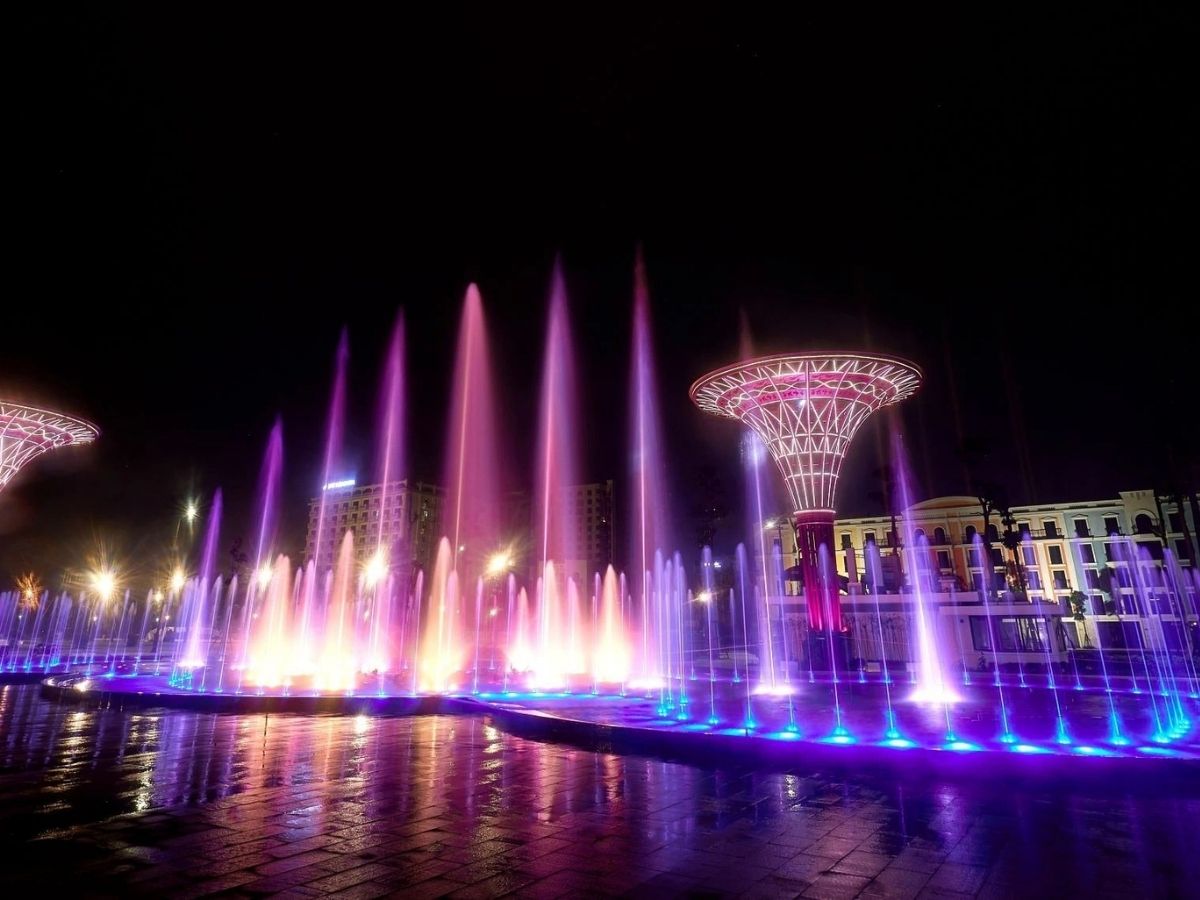
Sam Son Sea Square with water music performances. (Source: Collected)
Standing out in the center of the coastal city is the Sam Son Sea Square. This is a new symbol of Thanh Hoa tourism with modern architecture and a spacious area, where vibrant cultural, artistic, and musical events are frequently held. As night falls, the square sparkles with brilliant lights, combined with the gentle sound of waves, creating a scene that is both bustling and poetic. Visitors can stroll, admire the night sea view, enjoy fresh seafood specialties, or experience the year-round festival atmosphere at this place.
The Later Lê Dynasty Ancestral Temple is not only a spiritual destination but also a gateway to the nation's heroic historical treasure through one of the most memorable feudal dynasties. Come and feel the solemn, sacred beauty of the ancient temple to better understand the roots and cultural identity of Vietnam in general and Thanh Hoa in particular.

